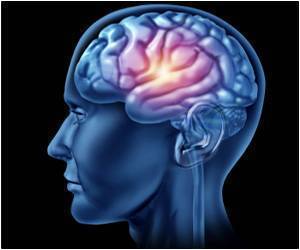The connections are still obscure, but mounting evidence points to a link between infections, the immune system, and neurodegenerative diseases.

‘Patients living with chronic infections are particularly susceptible to neurodegenerative diseases. Researchers also found that infertile animals appear to be protected from such neurodegeneration.’





Alejandro Aballay, senior study author and associate professor of molecular genetics and microbiology at Duke University School of Medicine, said, "In worms, there may be some type of signal from the sex cells or germline that plays a role in infection-induced neurodegeneration. That was definitely unexpected, though we know that infertility liberates energy that would have been spent on producing the germline and directs it toward tissue repair and other maintenance. It will be interesting to figure out how the response to pathogens fits into this scheme." In recent years, researchers have begun to notice a problematic relationship between pathogens and neurodegeneration. Multiple studies have shown that patients living with chronic infections are particularly susceptible to neurodegenerative diseases. What appears to happen is microbes infect a patient, alerting the immune system and unleashing inflammation, which progressively destroys neurons. This unintended side effect does not benefit the microorganism, and it certainly doesn’t benefit the host.
Because it is so difficult to study this process in humans, Aballay’s lab turned to the nematode worm, C. elegans, as a model. This 1-millimeter, transparent worm has a much simpler nervous system, consisting of only 302 neurons that represent most types of neurons in the mammalian brain. It also has a rudimentary immune system.
In the laboratory, these worms typically inhabit Petri dishes covered in a lawn of E. coli bacteria, which the animals graze all day. To infect the worms, Aballay and his colleagues simply replaced the worm’s typical chow with the common bacterial pathogen Pseudomonas aeruginosa. They also tagged the animals’ neurons with a fluorescent label so the researchers could visualize any neurodegenerative changes associated with infection.
The researchers witnessed a number of neural changes that are hallmarks of neurodegeneration. For example, they saw beaded neurons, nerve cells with little round outgrowths that give the appearance of beads. They also found areas where the neurons, which are normally straight like an arrow, were branched or wavy.
Advertisement
In humans, these changes would be accompanied by behavioral defects, perhaps making it harder to remember a name or where you put the car keys. In worms, the researchers found that these neural changes also had functional consequences. Normally, the animals would be able to sense and move toward their favorite treat - salt - but when their neurons were affected, so was their ability to respond to the stimulus.
Advertisement
In additional genetic studies, Aballay and his colleagues found that another gene called DAF-16 was required for resistance to neurodegeneration in these mutant animals. Its human equivalent, a gene called FOXO6, is known to function at the intersection of pathways controlling immunity, longevity and stress responses.
Aballay said, "In the future, we plan to focus more on what is happening at the level of the neuron, to understand how the neuron senses pathogenic molecules or inflammatory cues, and how sensing those cues ultimately triggers neurodegeneration."
Source-Eurekalert








